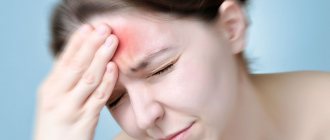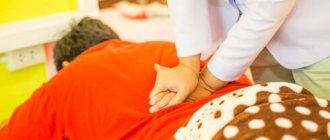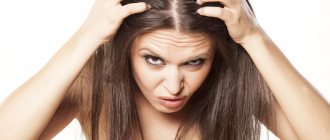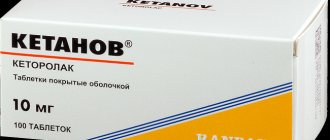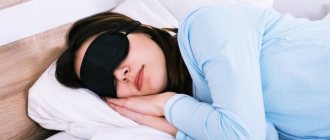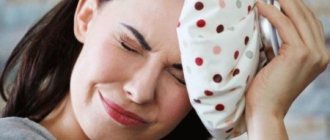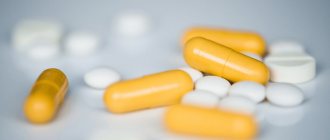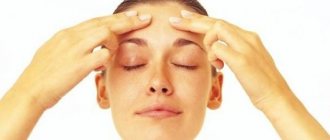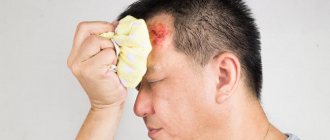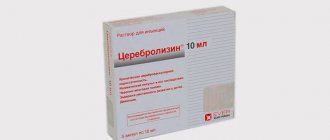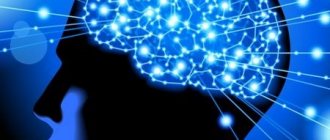Rules and techniques of execution
The easiest way to massage is to use your own fingers, but there is always a risk of influencing the wrong points, resulting in a migraine instead of a therapeutic effect. Familiarize yourself with the methodology and rules for performing the procedure:
- Carry out a massage before or during washing. This will allow the beneficial components in the shampoo to be better absorbed into the roots. Those with dry hair can also massage after washing, since the procedure activates the production of sebum.
- Start the massage with warming circular movements (they should be light) in the temporal areas and at the top of the forehead (hair growth line), gradually increasing their intensity and pressure, and moving on to the hairline. Finish the session with soft strokes again.
- The duration of the procedure is from 10 to 15 minutes. It is not recommended to increase the time, and if the session is carried out “in a hurry,” the effect will be minimal. The frequency of massaging is at least twice every 14 days.
- Movements are performed in the direction of growth of the strands. The massage therapist places his hands on top of the hair, as close to the roots as possible. The exception is the case when manipulation is carried out to treat seborrhea: then the fingers should directly touch the skin.
- Massage with warm fingers. In addition, to speed up blood circulation, you can drink hot tea before the procedure (regular or herbal - chamomile, sage, lemon balm, linden, etc.)
Stroking
The simplest technique, which consists of the massage therapist performing gentle and soft strokes from the forehead to the back of the head. Then similar movements are made from the parietal part to the ears, in the direction of hair growth. This massage helps improve blood flow. Ten minutes of stroking is enough to stimulate metabolic processes. In addition to accelerating hair growth, stroking helps improve skin condition.
Trituration
The effect on the dermis and roots is performed using the fingertips. Rubbing includes up and down movements, circular movements, and pressure. Start with the area behind the ears, then move to the neck, near the hairline. Next they move to the temples, then to the crown and forehead. A few minutes of rubbing activate the sebaceous glands, so after finishing the procedure you should immediately wash your hair.
Pat
This technique tones the skin. It is not for nothing that a similar technique is used for body massage. In order for the pats to be correct, four fingertips of each hand are used. The remaining two, large ones, carry out fixation in a certain area. The technique is not intensive, all you need to do is gentle pats in different parts of the head. The session takes no more than five minutes.
Reaching out
A special technique provides rapid blood flow to the roots, which is guaranteed to accelerate hair growth. The execution of this technique is as follows:
- Grab a single strand with your fingers.
- Slowly, slightly stretching each bundle, pull it up.
- Add small oscillating movements to feel the tension on the roots.
Combing
The process that is used to tidy up the curls has a beneficial effect on the scalp, but it must be done correctly. For therapeutic purposes, use a comb or massage comb, but with natural bristles. You can drop a little essential oil on the product: lavender or tea tree. Comb your strands slowly and consistently, enjoying the process. This will thoroughly remove dust from your hair and distribute sebum along the entire length. Regular combing will make your strands healthy, smooth and beautiful.
Benefits and indications
Head massage is needed to accelerate hair growth, improve cerebral circulation and stimulate metabolic processes, after which there is an increased supply of oxygen and nutrients to nerve cells. The procedure will help get rid of headaches caused by infectious diseases, tension, overwork, and stress.
Head massage is performed to improve blood supply to the brain tissue, eliminate vascular spasms, and activate the body’s immune system. Relaxation of the muscles of the cervical spine helps to normalize blood flow in the head area, which is associated with the prevention of ischemic damage to brain tissue. Other therapeutic effects:
- Activation of the central nervous system.
- Improving memory and mental activity.
- Improved vision.
- Increased performance.
- Normalization of intracranial pressure values.
After several sessions, sleep will normalize, anxiety and restlessness will disappear. To achieve a pronounced therapeutic result, doctors recommend taking a course of massage, which consists of 5-15 sessions.
Taking into account the manner of performance and the region where the foundations of the technique originated, classical, Thai, Chinese, and Indian types are distinguished. The session is carried out by a certified massage therapist or the patient independently (self-massage). Depending on the planned result, the following types are distinguished:
- To stimulate hair growth, combat dry and oily seborrhea.
- Relaxing (to eliminate muscle tension in the neck and shoulders).
- Relaxing (to eliminate the feeling of fatigue after a busy day at work).
- Calming (to relieve nervousness and anxiety).
- Painkiller (to relieve pain localized in the head area).
- Impact on biological points (to activate the immune system, connect the body’s natural reserves).
- Restorative (to improve the conduction of nerve impulses, stimulate the activity of the central nervous system).
All types of procedures are aimed at normalizing blood flow, which promotes intensive blood supply to the brain matter and skin of the skull. Head and neck massage is done for men and women. Massage therapists in SPA salons offer such types of hardware massage as vacuum and darsonval. These techniques involve the use of special devices.
A classic neck and head massage to improve blood circulation to the brain is performed in a sitting or lying position. During the session, natural reflex reactions become aggravated and intensified. Basic principles:
- Massage movements take place in the direction of hair growth. From the forehead to the crown, then to the back of the head. From the parietal part to the ears, from the top of the head downwards, radially in different directions.
- The following techniques are used: stroking, rubbing, shading, vibration. Stroking can be planar and rake-shaped, rubbing can be circular and spiral-shaped. Hatching is performed by intermittent pressure, shifting, stretching, and pinching the skin. Vibration is a point effect of a different nature - puncturing (imitation of raindrops), linear, moving continuous, local (local).
- Indications: pathologies of cerebral vessels, impaired cerebral blood flow, consequences of injuries in the skull, physical and mental stress, respiratory viral infections, hair loss.
Stroking is done with the pads of the fingers or the inside of the palm. Rubbing is done with the inner surface of the palm, the pads or phalanges of bent fingers. The procedure is done on top of the hair or exposing the skin. In the second case, the hair is divided into partings, and massaging movements are performed along the partings.
The first parting is a straight line in the sagittal (longitudinal) direction, which starts from the middle of the forehead at the point where hair growth begins and ends at the back of the head. The next parting is done in parallel at a distance of 2-3 cm from the first. Any techniques alternate with stroking. Session duration is 5-10 minutes. After performing a therapeutic head massage, the neck and shoulder area begins to be massaged. The cervical region is treated from top to bottom.
Neck massage is recommended if your head often hurts or feels dizzy, after a traumatic brain injury, cerebral infarction, stroke, or with hypertension. In the neck area there are large arteries that supply brain tissue and jugular veins. The procedure improves cerebral blood flow, stimulates the outflow of venous blood and lymph from the skull area.
Self-massage of the head at home
In order to experience all the benefits of a scalp massage for hair growth, you don’t have to go to a professional massage therapist. You can feel all the beauty and benefits of a scalp massage for your hair by doing it yourself - especially since, if you follow all the recommendations, it is not at all difficult. Self-massage of the head “accelerates” blood circulation and has a positive effect on hair thickness and its appearance. Let us make a reservation that self-massage is contraindicated if there are skin diseases or rashes on the hands and body.
Before you start the massage, take care of your hands: they should be clean, with neatly trimmed nails and always warm - cold provokes muscle tension
It is important that your hands move easily over the massaged area; if your hands sweat a lot, it is recommended to wipe them with a 1% formaldehyde solution
Head massage to stimulate hair growth is performed standing or sitting; the procedure is always completed and started with light stroking with minimal pressure. The most favorable time for a head massage to restore and stimulate hair growth is after bath procedures, when the hair has dried but is still damp. Turn on your favorite music, take a comfortable position. Remember: massage is, first of all, relaxation and elimination of negativity.
Don't go straight to the roots - start with massaging movements in the forehead, temples, and behind the ears. Try to do everything slowly and smoothly - enjoy the process. You need to massage only in the direction of hair growth, i.e. top down. The technique for massaging the head to stimulate hair growth is the same as during a classic massage: stroking - rubbing - effleurage - stretching - vibration - and stroking again. Using confident but gentle movements, massage your skin, pull your hair, strand by strand - feel the warmth rushing to your head
Finally, pay attention to your neck and shoulders. Regular self-massage will significantly improve your well-being and mood, and your hair will simply be transformed beyond recognition.
In addition to traditional massage, you can improve blood flow with the help of auxiliary means - for example, anti-stress goosebumps. It has a lot of advantages: inexpensive, accessible, effective. Not to mention how pleasant such a massage is (especially if someone else does it for you). For visible results, 5 minutes a day is enough.
Types of head massages
A head massage not only has a cosmetic effect, but can even lift your mood by triggering an influx of essential substances and oxygen to the brain. You just need to choose the right method. There are many different techniques for performing head massage, here are some of them.
Using a comb
The simplest technique that can give the scalp the necessary nutrition. The advantage of this method is that you don’t need to set aside separate time for it - just stand in front of the mirror for a few minutes longer than usual.
You will need: a special massage comb (metal or wood), with bendable teeth to avoid injury. An important feature is that it should not be electrified.
Towel massage
The so-called Margot method. Effective against hair loss. How the procedure is performed:
- Lean down and rub your hair with a soft towel heated on the radiator.
- Movements should be of medium strength. so as not to injure the skin.
- The duration of the procedure is from 30 seconds. up to 5 minutes, until a feeling of slight discomfort appears: burning, tingling, etc. This exercise must be performed every day.
Hair pulling
Promotes blood flow to the scalp. To do this you need:
- Distribute hair into strands.
- Gently and slowly pull each strand several times.
- Once the twitching is complete, experts advise applying an egg or gelatin mask.
- It is not recommended to do this procedure every day. 2-3 times a week will be enough.
Massage with fingers
Able to prolong the youth and beauty of hair.
- You need to take a comfortable position. You can also use your favorite essential oils if you wish, as they have beneficial properties.
- You need to move in one direction - from the temples, forehead, back of the head to the crown.
- Gradually move from slow circular movements to more active ones. Finish the massage with light circular movements.
- As an additional pleasant bonus for the body, massage the back of your neck.
Those with long nails need to be extremely careful not to injure the skin!
Salt massage
This is a special massage that stimulates the process of strengthening roots, hair growth and improving blood circulation. Better to use sea salt
Do not forget to be careful, because you can easily get hurt and cause yourself a lot of trouble, instead of a positive result. So:
- Wet hair with warm water and dry with a towel.
- Distribute the salt evenly over the entire surface of the scalp.
- Massage the skin with light, gentle movements for 10 minutes.
- Upon completion of the process, thoroughly rinse off the salt with warm water.
Like any procedure, head massage against hair loss has its pros and cons, and has its own indications and contraindications.
Without knowing all the nuances, you can inadvertently damage already weak hair.
To strengthen memory
To perform the massage technique correctly, you need to mentally build a line connecting the center of the frontal lobe and the beginning of the spine. The main point will be located in the center of this line. The second massage point is located in the center above the upper lip.
The intensity of the impact is average. Perform with the pad of your thumb or index finger. The processing time does not exceed 1 minute.
When performing these techniques, the risk of developing senile dementia and Parkinson's disease is reduced. To obtain the appropriate effect from the massage, a course of use is necessary. The number of sessions and their frequency depend on specific life indicators and circumstances. The main positive aspect of this head massage is that you can perform it yourself.
Effect of massage
The main purpose of massage is to stimulate the hair follicles, which leads to hair growth. It is usually prescribed for severe hair loss, which is caused by two groups of causes. The first includes external factors: frequent dyeing and the use of low-quality dyes, the effect of chemicals for curling and the use of hair dryers, straightening irons and curling irons.
Internal causes include improper metabolism, stress, the postpartum period, diseases of the immune system, fungal infections, cervical osteochondrosis, hormonal imbalances and poor nutrition. Taking antibiotics and strong medications, recovery from illnesses and injuries is often accompanied by hair loss.
Massage sessions can not only slow down the onset of baldness, but also increase hair thickness and get rid of dandruff.
Therapy is effective for diseases of the blood vessels of the brain, migraines, low blood pressure and insomnia, for diseases of the respiratory system and gastrointestinal tract. Massaging the scalp eliminates spasms of connective tissues. Brain activity and attentiveness improve, and overall tone increases.
Mechanism of influence on the body
Trichological massage is effective by improving blood circulation and lymph flow. Mechanical impact on the scalp stimulates the sebaceous glands and awakens the hair follicles. During treatment, dead epidermal cells are removed, the skin relaxes and the cells are saturated with oxygen and nutrients. Lymph passes through the vessels freely, ridding tissues of waste products, excess fluid and toxins.
Stimulation of nerve endings leads to the formation of multiple impulses going to the brain. This provokes the production of hormones, incl. and hormones of joy, pleasure, happiness. The nervous system relaxes, negative emotions and feelings of anxiety go away. At the same time, natural tissue regeneration processes are launched, which has a rejuvenating effect on the entire body.
Indications and contraindications
Massage of the scalp is recommended not only as a means of prevention and hair restoration, but also to eliminate many skin diseases. It is indicated for:
- Itching, dry skin and frequent irritation;
- Edema;
- Thrombosis;
- For injuries and diseases of the musculoskeletal system;
- Drowsiness and apathy;
- Muscle cramps and spasms;
- Pulmonary failure;
- Muscle pain;
- Stress, depression;
- Emotional exhaustion and chronic fatigue;
- Impaired blood circulation;
- Migraines and headaches, accompanied by vomiting, nausea, fainting.
Do not massage if:
- There are open wounds, abrasions, and hematomas on the skin;
- Diagnosed with hypertension;
- There are infectious diseases;
- Enlarged occipital and submandibular lymph nodes;
- Have chronic heart disease.
Self-massage for brain vessels
The main function of cerebral vessels is to regulate blood flow. When one part of the brain works intensively, blood from less busy parts is redirected to it.
Problems with blood circulation lead to illness, headaches and poor health. You can restore the normal functioning of blood vessels with the help of medications or simple massage practices.
If there are no contraindications, they can be performed at home.
Cerebral vessels dizziness how to treat
Features of blood circulation in the brain
Problems with blood flow occur when blood volume decreases or when blood vessels become obstructed. Symptoms of the onset of the disease include:
- Frequent and severe headaches;
- Pain in the eyes that appears in the evening;
- Frequent and severe dizziness;
- Attacks of vomiting and nausea;
- Tinnitus, feeling of stuffiness;
- Numbness;
- Poor sleep;
- Memory impairment;
- Fast fatiguability;
- Absent-mindedness.
Progressive vascular disease leads to a sharp deterioration of memory, impaired coordination of movement, irritability and depression.
The main danger of poor blood circulation is the occurrence of Parkinson's syndrome or dementia.
Dyscirculatory encephalopathy is a slowly developing lesion of the blood vessels of the brain. It often accompanies hypertension and osteochondrosis, vegetative-vascular dystonia. High blood pressure leads to thickening of the walls of blood vessels until the lumen is completely closed. This provokes the development of a cerebral stroke.
Diagnosis of the disease is carried out using ultrasound or MRI, electrocardiography. The course of medications is prescribed individually, and it is aimed at protecting neural connections, stimulating metabolic processes and normalizing blood flow.
In addition to drug treatment, physiotherapy, exercise therapy, traditional medicine and special massage are prescribed.
The effectiveness of massage
To improve blood circulation in the brain and reduce blood pressure, doctors recommend acupressure. After the sessions, the following positive changes are observed:
- Stress is reduced;
- Relieves muscle spasms and blocks;
- Convulsions go away;
- Sleep is normalized;
- Headaches go away;
- Blood circulation improves not only in the brain, but also in other organs;
- The movement of lymph and metabolic processes at the cellular level improves;
- Improves concentration and memory;
- Joint mobility is restored;
- The feeling of numbness in the limbs disappears;
- Blood pressure normalizes;
- Improves memory, thinking ability, and emotional stamina.
The ability to do self-massage allows you not only to improve your well-being, but also to maintain health, avoid serious problems and premature aging.
The mechanism of the effect of massage on the body
Massage of the cervical-collar area provokes the production of hormones responsible for the transmission of nerve impulses.
By influencing areas of the brain, they relieve the organ of excess fluid, which leads to the restoration of lymph flow and blood supply.
Massage of this area is a good means of preventing diseases of the joints and spine. It is based on direct finger pressure on certain points or muscles.
Stimulation of acupuncture points that are connected to energy channels leads to the activation of neurons in the pituitary gland and hypothalamus. The response is the production of histamine, endorphin and serotonin. These hormones are responsible for metabolic processes, tissue regeneration, and the removal of toxins from the body.
Head and neck massage technique
It is recommended to massage the head twice a week as a preventative measure and for hair growth and strengthening, followed by hair washing. Some people practice scalp massage with a comb, after which they wash their hair, then proceed to the main head and neck massage. Others perform a scalp massage first, and wash their hair after the main massage if the hair becomes oily.
Includes classic massage movements. Perform a head massage:
- stroking: longitudinal, transverse and clasping one hand on the forehead, moving towards the back of the head. The second hand supports the back of the head;
- stroking down and to the sides on the crown, going around the ears - on the neck. The intake stimulates the nerve endings of the skin, which helps to activate blood circulation to the hair roots, cleanses the glandular ducts, delivers fresh oxygen and nutrition to the skin and hair follicles;
- zigzag, rake-shaped rubbing with both hands from the top of the crown to the bottom border of the hair. To direct movements transversely or longitudinally in all directions, the position of the hands is changed;
- active rubbing to enhance secretory activity and cleanse the scalp. At the same time, hyperemia will appear, the nutrition of hair and skin will improve, the nerve endings in the scalp will be excited, and the headache will go away;
- stretching and shifting the skin, placing the palms of the hands at the same time on the forehead and back of the head. The skin is first shifted on the forehead, then across the back of the head, then along. Cover the entire scalp. Use your fingers to pinch the folds on the forehead and back of the head;
- kneading, increasing the mobility of the scalp, strengthening deep tissues and increasing its tone, relieving pain, improving hair nutrition;
- Ayurvedic technique - massage the head with a large comb, then separate strands of hair for light tugging on each strand. At the same time, they hold their head. The pulling force is gradually increased, but without pain or hair pulling;
- stroking between each change of massage movement. At the same time, the patient feels a slight pleasant warmth, his muscles relax, the local skin temperature increases, which improves skin breathing;
- vibration movements, the vibrations of which must be of different speeds and frequencies, amplitude and intensity. Vibration head massage has a beneficial effect on the nervous system and internal organs.
Head massage is performed along massage lines that pass:
- from the bridge of the nose along the bones: frontal and parietal, down to the neck and further to the trapezius muscle;
- from the temporal bone past the area behind the ear to the neck;
- along the side surface of the neck from the ear towards the trapezius muscle;
- from the bridge of the nose along the eyebrow to the temples and crown of the head.
Neck massage is performed:
- stroking: planar, grasping, comb-shaped, pincer-shaped in the direction from top to bottom;
- rubbing: straight, circular, crossing, sawing and hatching;
- kneading: transverse, longitudinal, forceps, shifting, stretching, pressing;
- vibration: puncturing, light tapping, patting and shaking with individual fingers.
A neck massage will relax the muscles of the shoulder girdle and skull, which is necessary for normal blood circulation and relief from headaches and muscle pain. Massage manipulations on the neck are carried out on the sides and back from top to bottom, and from the front - from bottom to top.
Massage indications
To prescribe a massage, the following indications are required:
- insufficient blood circulation and tissue nutrition;
- narrowing of the alveoli, impaired serotonin metabolism;
- uneven expansion of blood vessels in the brain;
- reduction of arteriolar reactivity to carbon dioxide;
- disorder of the central nervous system;
- low or high blood pressure;
- stress, migraine and pain syndromes of the head and muscles for other reasons;
- there is no reaction of the scalp to cosmetics;
- dandruff, improper functioning of the sebaceous glands;
- Intense or delayed hair loss and baldness;
- Hypertension and hangover syndrome.
Massaging the head and neck to improve blood circulation can be a good solution to the problem without the use of drugs. Cerebrovascular accidents occur in people of all ages, from newborns to the elderly, so ways to combat them are always relevant.
Signs of circulatory problems include:
- regular headaches, dizziness;
- tinnitus;
- weakness;
- dark spots before the eyes, lightheadedness;
- fainting.
Simple types of massage can act as both therapeutic and preventative agents.
How to saturate the brain with oxygen: massage to relieve pinched blood vessels in the neck | Club Mamatov
To keep your head clear and healthy, and your eyes to see well, you need a regular supply of oxygen and nutrients. If there is not enough blood in the brain, then the problem is in the neck. More precisely, in the vessels passing through the cervical spine, which are squeezed by the vertebrae.
When the question arises of how to treat pinched neck vessels, you should not immediately grab pills and medications. All drugs relieve only pain. It is impossible to return vertebrae to their place, or remove protrusions, with pills. This needs to be understood.
Dr. Mamatov shows exercises to improve blood circulation in the brain. To work on painful areas, prepare a wooden spoon or spatula.
Exercises to saturate the brain with oxygen
Some people call this Mamatov’s exercise for blood circulation with a spatula. The name is not important, the main thing is the result. Namely, relieving pinched blood vessels in the neck.
Neck vessel clamp
Scraping movements with a spatula from top to bottom under the base of the skull from the edges to the center. Start on the right, then left and then center. 12 times in each area with light pressure. When moving, the arms go as low as possible.
Such movements relieve tension in the blood vessels of the neck and improve oxygen supply to the brain.
Massage for brain circulation
Head tilts with a spatula
Place the handle of a spoon or spatula with its edge to the base of the cervical region. The head goes up as you inhale, and down as you exhale. The deflection angle is small. It may be painful, but this is normal.
Removing the clamp of the neck vessels
Spatula on the sides of the neck
Like the previous action, only apply the handle on the edges of the neck . As you inhale, eyes up, as you exhale, eyes down.
Practice enriching the brain with oxygen
Head tilts without a shoulder blade
your hands together and place them on the back of your head. Keep your back straight. The spine is elongated vertically. Movements are only in the cervical region. Relax your neck. The head leans forward. From the bottom position, while inhaling, raise your eyes up and hold your breath.
Exhale slowly and deeply, while simultaneously tilting your neck even more. for 3 counts, hold until the count is 5 , exhale slowly until the count is 5 , hold. And such repetitions can be done 12 times. Avoid pain.
Relaxation after exercise
Relaxation. Put your hands down. After exercise, you feel that there is a rush of blood to the brain. This means that brain nutrition has increased. As a result, relaxation in the eyes, face and other pleasant sensations.
In general, all exercises are aimed at simple neck correction. Enrichment of the brain with oxygen will still occur, to one degree or another. This depends on how serious the clamping of the neck vessels is.
Write in x, what changes have you noticed in yourself?
Video on how to relieve pinched blood vessels in the neck
⚠️ The information in the article is for educational purposes only. All your actions must be coordinated with your doctor or other specialist at your local clinic!
Good health to you, dear readers!
Yandex.Zen channel
Rules for head massage
Massaging the neck and head under the hair does not require particularly complex preparation. There are several general rules for carrying out a useful procedure.
- The massage is done either before washing your hair, or right during washing, but not after. This is mainly due to hygiene reasons.
- Before starting the procedure, wash your hands thoroughly with soap so as not to introduce bacteria into enlarged skin pores.
- Since the blood flow accelerates during the procedure and useful substances are quickly distributed throughout the internal organs, it is best to carry out it a couple of hours after eating, when the concentration of elements in the body is maximum.
Both for treatment and for cosmetic purposes, the procedure must be done regularly - daily or every other day, then its properties will be beneficial. To perform it correctly, you can study videos and photos of head massage.
Advice! It is recommended to carry out a useful procedure in the evening, since it is classified as relaxing, then it will be especially easy and pleasant to go to sleep.
Heads and faces
The main purpose of facial massage is to prevent premature aging of the skin. An additional benefit is that during the massage the likelihood of muscle spasms is reduced and the blood supply to the skin improves.
The skin of the face is very sensitive, as it does not have large reserves of subcutaneous fat. Blood vessels are located close to the surface.
During the massage, the fingertips gently impact the following areas:
- brow ridges;
- eyelids;
- cheeks;
- sinuses;
- chin.
Massaging the neck area will significantly improve blood supply to the head. It does not require a long time and takes about 3 minutes. The neck contains large blood vessels and lymph nodes.
The procedure is performed in a circular motion up and down. The intensity of pressure is moderate. Movements along the back of the neck are performed from top to bottom. Side part – from bottom to top.
With regular practice of this technique, the patient’s mood will improve, performance will increase, and concentration will improve.
This massage is aimed at strengthening blood vessels in hypertensive pathologies. When performed regularly, there is a significant improvement in the patient's health.
This massage practice is performed by medical professionals. It is impossible to perform it on your own, since it affects not only the head area, but also between the shoulder blades. In addition, special skill and understanding of the actions performed are required.
To improve blood circulation
The essence of this massage is to ensure that the blood flow inside the brain becomes uniform. The blood supply to areas of the brain depends on the performance of specific activities. At the same time, the remaining zones are supplied with less blood.
Massage practice allows you to distribute blood evenly across sections, which leads to:
- to improve well-being;
- improving performance;
- reducing the intensity of headaches.
The procedure can be performed in two ways:
- acupressure, or acupressure of the head;
- massage to strengthen memory.
Massage with essential oils
Aromatic oils are actively used in the spa industry due to their relaxing and calming effect. Every massage therapist has a couple of oils that clients especially like. But essential oils are not only about pleasant smells and sensations, they are also beneficial, since their use stimulates hair growth, helps treat split ends and eliminate dryness.
Be careful: some components of the oils may be allergens, so before using them you need to do a test on the skin behind the ear or on the crook of the elbow.
The essential oil is concentrated and can cause skin burns, so it is used only as an addition to a massage product (or oil). Add 1-2 drops of essential oil to 1 tablespoon of oil (for example, olive or baby oil) and rub into the skin for a long time, moving from the forehead to the crown. The oil can be washed off immediately after the massage, but if time permits, it is recommended to wrap your head in a warm towel for a couple of hours.
It is very useful to pull the hair during a head massage; this should be done carefully, without causing any unpleasant sensations. After pulling all your hair, strand by strand, warmth should spread throughout your head.
Please note that not every essential oil is suitable for massage. The most suitable oils for massaging hair and scalp are almond, lemon, chamomile, tea tree and Japanese mint oils.
The procedure is contraindicated for high blood pressure, rashes, head injuries, and eczema.
Reviews about using massage for hair growth
Head and neck massage has received positive reviews on the Internet from ordinary people who were able to stop hair loss, cure seborrhea and simply improve their appearance and hair growth. This fact allows us to conclude that this procedure is suitable for most people.
The variety of techniques and methods allows you to choose the one that suits your individual characteristics and specific needs. Trichologists also advise using massage techniques to solve problems of baldness in conjunction with the use of medications.
Article design: Vladimir the Great
Video: explanation and performance of massage
Featured articles
Poor circulation can cause irreversible processes in the body. After all, blood delivers oxygen, nutrients, and removes waste products. A decrease in cellular nutrition and deterioration in breathing lead to disruption of the coordinated functioning of the entire organism. Regular massage will help restore blood circulation, the basics of which you can master on your own.
Benefits of massage for blood circulation
The main purpose of the procedure is to improve blood circulation in problem areas of the body and increase the overall tone of the body. Massage promotes rapid recovery of damaged muscles and stimulates the regeneration of internal organs. It increases the elasticity of ligaments and muscle tissue, and helps saturate them with beneficial substances brought by the blood.
Massage not only effectively copes with congestion, it prevents its occurrence. The procedure is indicated for circulatory disorders of the lower and upper extremities. It is effective in localizing pain in certain areas of the lower back, spine, and cervical spine. Massaging certain points on the head relieves migraines and prevents various problems with blood circulation in the brain. You can read more about this on our website.
How does massage affect the body to improve blood circulation?
Massage has a wide range of effects, improves blood circulation locally, and affects the entire body. Under the influence of the procedure, blood flow to the heart is stimulated, after which it again rushes into the cells of the whole body. The benefits of massage are as follows:
- Muscle tone increases, congestion disappears.
- Cellular metabolism improves, the skin becomes smooth and acquires a pleasant color.
- Stimulates cell regeneration, activates the process of removing toxins and free radicals.
- Normalizes metabolism, stimulates immunity.
- Improves the functioning of internal organs and the respiratory functions of the skin.
Special ones will help to complement the effect of the massage, which you can easily do at home.
How to massage to improve blood circulation: technique and basic techniques
Classic massage is considered the simplest and easiest to perform. Once you have mastered massage techniques, you will be able to perform massages to improve blood circulation at home.
Basic massage techniques to improve blood circulation:
- The procedure begins with light stroking, which will relax the muscles and bring the body back to normal.
- After this, you can begin kneading, pressing with your thumbs and rolling the body tissues with the rest until relaxation occurs.
- Rubbing in case of poor circulation is an effective technique that increases blood flow and gives a feeling of warmth from the massaged area.
- Pressing with the pads of your thumbs stimulates blood flow and increases tone.
- Pressure on various parts of the body can be increased if it is applied not only with the fingers, but with the entire palm.
At first, it costs about 10-12 minutes to massage the areas; after several sessions, the duration of the procedure is increased to 20-30 minutes, eventually reaching an hour or more. Movements should be directed from bottom to top, from the periphery to the center.
Contraindications for massage
- Massage is contraindicated in case of exacerbation of chronic diseases, acute inflammation of the skin and organs.
- The procedure is prohibited if there are foci of purulent inflammation on the body or inside the body.
- Increased bleeding is one of the symptoms of a contraindication to the procedure. The fragile walls of the capillaries break under the influence of massage, causing bleeding.
- If there are fungal skin infections, allergic rashes, or injuries on the body, the procedure is contraindicated.
Before performing a massage, especially if you have chronic diseases, you should consult your doctor.
For 50 centuries, humanity has been relieving nervous and mental tension by performing simple massage movements in the head area. This reduces the intensity of headaches and reduces stress levels. A person gains the opportunity to increase his efficiency and cheerfulness. Improve sleep quality and prevent chronic neurological disorders.
The mechanism of the effect of massage on the body
Massage of the cervical-collar area provokes the production of hormones responsible for the transmission of nerve impulses. By influencing areas of the brain, they relieve the organ of excess fluid, which leads to the restoration of lymph flow and blood supply. Massage of this area is a good means of preventing diseases of the joints and spine. It is based on direct finger pressure on certain points or muscles.
Stimulation of acupuncture points that are connected to energy channels leads to the activation of neurons in the pituitary gland and hypothalamus. The response is the production of histamine, endorphin and serotonin. These hormones are responsible for metabolic processes, tissue regeneration, and the removal of toxins from the body.
Head and neck massage is recommended for diseases of the nervous system, poor circulation, chronic fatigue, depression, sleep problems, as well as during the recovery period after injuries and operations.
- Mental disorders;
- Heart disease during exacerbation;
- Skin diseases and wounds in the area of treatment;
- Inflammatory processes;
- Increased body temperature;
- Spondylosis;
- Oncology;
- Acute cerebral stroke;
- Inflammation of the joints;
- Blockage of blood vessels.
Massage is not performed if you have an allergic reaction to one of the components of the cream or if the patient is in an insane state (alcohol or drug intoxication). During pregnancy, as well as after suffering from respiratory diseases, it is recommended to consult a doctor before attending a session.
The massage course is calculated individually based on the indications and condition of the patient. On average, each includes from 10 to 20 sessions, which are carried out every other day or every day.
The procedure time depends on the type of massage: acupressure of the head takes from 3 to 7 minutes, massage of the muscles of the collar area - from 20 minutes to an hour. Sessions follow the same pattern for both children and adults. The only exception is pregnant women. The peculiarity of massage for them is the limitation of the session duration: no more than 20 minutes.
To maintain the effect, sessions must be performed regularly: 2-3 times a week, and acupressure can be performed daily before bed.
After the massage
You can increase the results of a scalp massage using light texture oils. These include cosmetic oils based on burdock and castor. Using these products in their pure form is quite problematic, because they have a dense texture and are difficult to wash off from the hair.
Immediately after finishing the procedure, it is better to take a horizontal position and allow the blood system to complete its intensive work in the scalp area. The characteristic warmth from the massage should disappear within 30 minutes, and after an hour you can go wash your hair.
To achieve a visible effect, scalp massage should be carried out regularly - about 3 times a week.
Indications and contraindications
A massage procedure for health purposes is prescribed if the patient has:
- headaches;
- regular stressful conditions;
- presence of dandruff;
- state of anxiety;
- insomnia;
- chronic fatigue syndrome;
- muscle spasms;
- hair loss;
- convulsions.
Contraindications to the use of the procedure:
- traumatic brain injuries;
- malignant neoplasms;
- the presence of chronic pathologies of the cardiovascular system;
- chronic degenerative inflammation in the spine;
- pathologies of the circulatory system (thrombosis, thrombophlebitis);
- postoperative recovery period;
- baldness;
- eczema on the scalp;
- embolism;
- elevated temperature.
Neck massage
To improve blood circulation, it is enough to massage the neck for 3 minutes, but it is advisable to do it daily
Lymph nodes and large vessels are located on the front of the neck, so you must be extremely careful or avoid massaging this part altogether.
All classic massage techniques are used for neck massage. The procedure begins on the sides of the neck and moves to the back. Movements from behind - from top to bottom, from the side - from bottom to top. The effect of the procedure is obvious - mood improves, muscle tension decreases, and concentration increases.
Massaging the head and neck to improve blood circulation can be a good solution to the problem without the use of drugs. Cerebrovascular accidents occur in people of all ages, from newborns to the elderly, so ways to combat them are always relevant.
Signs of circulatory problems include:
- regular headaches, dizziness;
- tinnitus;
- weakness;
- dark spots before the eyes, lightheadedness;
- fainting.
Simple types of massage can act as both therapeutic and preventative agents.
Contraindications
Relative contraindications for the procedure include any damage to the skin of the skull and neck, elevated body temperature, fungal infections, rashes, inflammatory processes localized in the scalp and adjacent areas. Absolute contraindications: pathologies of the hematopoietic system, cancer, infectious diseases occurring in the acute period.
There are many different techniques for massaging the head, shoulders, neck, and face. Any type of massage is aimed at improving well-being, normalizing cerebral blood flow, getting rid of painful sensations, and correcting disorders and disorders in the functioning of organs and systems.
Massages against headaches and stiff neck muscles
Eliminating headaches is what a head massage is useful for. It can be used on different parts of the head.
Temples and forehead
For headaches due to overexertion or hypothermia, a light massage of the temples and forehead will help. Improved effect can be achieved by using essential oil:
- lavender - if you need to warm up after hypothermia;
- mint – for a feeling of heat in the head;
- chamomile - for relaxation.
It’s easy to do a head massage correctly. Using the fingers of both hands, lightly massage your forehead and temples. Pressing the skin with your fingertips will reduce tension in your facial muscles. Using the pads of your ring fingers, gently press on the eye sockets at the root of the nose. Smooth out the muscles around the eye sockets under the eyebrows. Gently wipe your face along both sides of the nose, moving to the jaw (this is often where the center of accumulated tension is located).
Neck and shoulders
Tight, rigid neck muscles suppress the nerves. This is manifested by pain, numbness, blurred vision
Significant relief will be provided by gentle pressure on the neck muscles (just below the hairline) - gently massage the neck, placing your hands on each side of it.
Light self-massage is the movement of the shoulders: lift them, move the shoulder blades, then relax. Repeat 3-4 times.
Use your left hand to massage your right shoulder, squeezing the muscles on the back of your neck and shoulders. With your right hand, do the same on your left side.
With your fingers, grab the skin on the back of the neck (the so-called collar area), lightly squeeze, moving upward. Once you reach the base of the skull, return to the shoulders.
Grab your head with your hands (fingers pointing towards the top of the head), move in a circular motion along the top of your neck, while applying light pressure.
